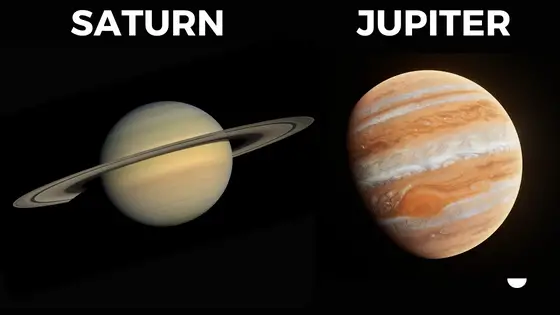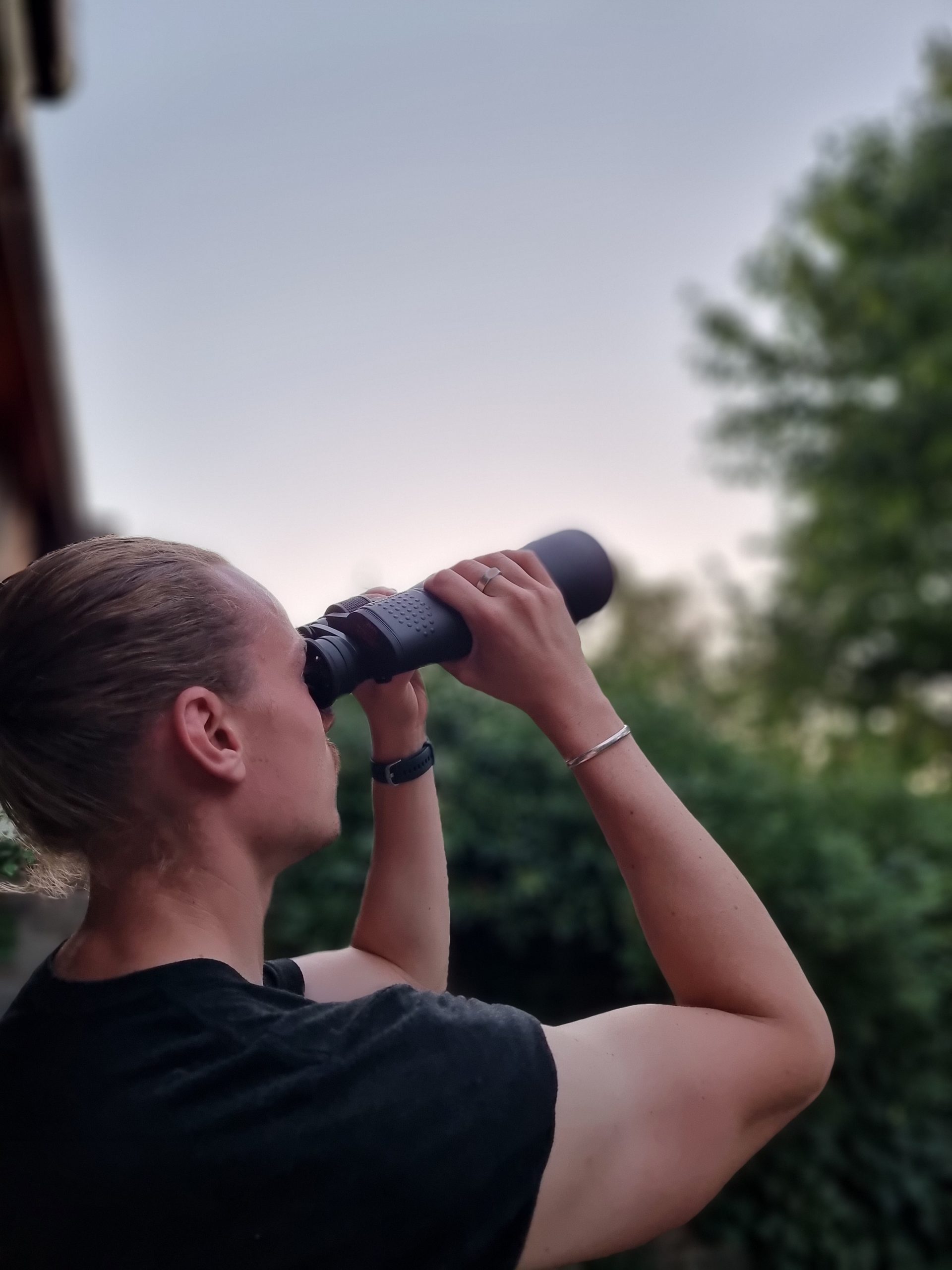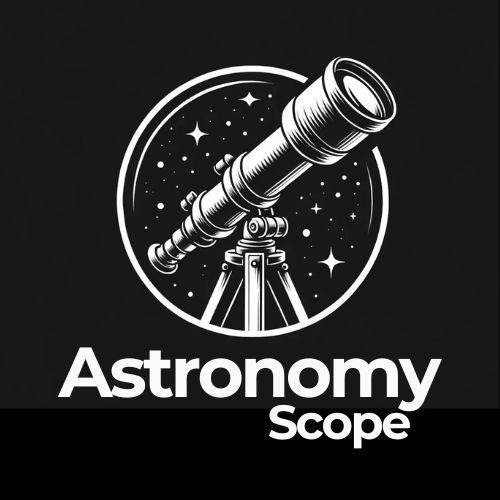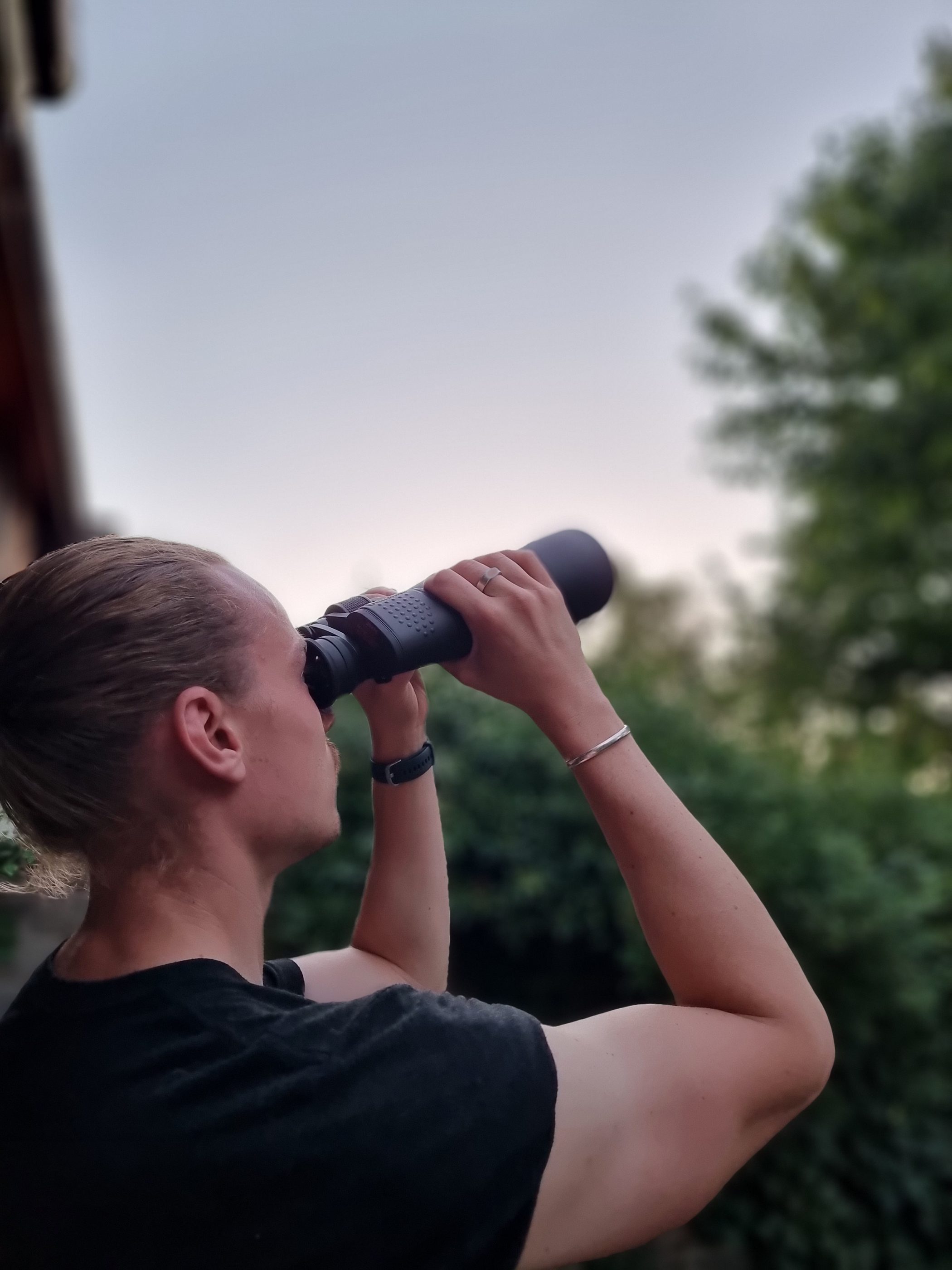Saturn and Jupiter. The two giants of our solar system are also, in fact, neighbors. Jupiter is the fifth planet from the sun, whilst Saturn is the sixth, with both these planets sandwiched in between Mars, on Jupiter’s side and Uranus on Saturn’s side. But what are the exact differences between these two fascinating planets? And what do they have in common? These are the very interesting questions that we will explore today.
So, what are the main differences between Saturn vs. Jupiter? The main differences between Saturn and Jupiter are their size, the way they orbit the sun, temperature, alongside many others. Jupiter is bigger than Saturn, and it is only Jupiter that Saturn is second to when it comes to size. Jupiter takes ten years to orbit the sun once, whilst Saturn takes nearly 30 years to complete the same orbit. Jupiter is warmer than Saturn both on its surface and also at its core.
That’s the high-level overview.
But let’s delve deeper into each one below before moving over to what these planets have in common.

What Are The Differences Between Saturn And Jupiter?
Saturn and Jupiter are vastly different from one another when it comes to size, density, orbit, chemical composition, temperature, the number of moons and rings they have, their respective axle tilt, and their aesthetics.
It’s fair to say that there are definitely more differences between Saturn and Jupiter than there are similarities.
We’re going to explore each one of these key differences between Saturn and Jupiter, below.
Size and Mass
Even though these two planets take number one spot (Jupiter) and number two spot (Saturn) in the size league table, there is still a clear difference between the two.
This is always the case when you compare any two planets in our solar system. The margins may be finer, but there’s also a significant difference in size.
And that’s great. It means we’ve got a diverse solar system.
When it comes down to Saturn vs. Jupiter, Jupiter comes out on top in the size department. But then again, Jupiter does beat everyone in our solar system.
Make no mistake, though, Jupiter is not the biggest planet in the universe; it just is the biggest in our solar system.
Jupiter is bigger than Saturn on all fronts, including diameter, surface area, and mass.
Saturn has a diameter of 116,460km compared to Jupiter’s diameter of 139,820km. So there’s not much of a clear difference, but still enough to notice.
Saturn has a surface area of 42.7 billion square kilometers, whereas Jupiter has a surface area of a whopping 61.42 billion square kilometers. A bit of a starker difference this time.
Finally, the same is true when it comes to comparing mass as well. Saturn has an impressive mass of 569,000,000,000 trillion metric tons, but it’s still less compared to Jupiter’s humongous mass of 1,898,000,000,000 trillion metric tons.
Picture it this simple way. Jupiter is 11.5 times the size of Earth. Saturn is only 9.5 times the size of Earth.
Density
Saturn has a density of 0.687 g/cm³. Jupiter is almost twice as dense as this.
Orbit of the Sun
As I have previously stated, Saturn is the sixth planet from the sun, whereas Jupiter is the fifth planet from the sun.
This is important, because the distance a planet is from the sun has an impact on orbits.
You might think that because these planets are neighbors, their orbit times will be similar. Well, guess again. As Saturn is further away from the sun, it takes more time for it to orbit it. Saturn takes about 29.4 Earth years to orbit the sun.
Jupiter is closer to the sun. So, consequently, it only takes the planet 10 years to orbit the sun once.
Chemical Composition
Now, chemical composition is a tricky one. Ultimately, Saturn and Jupiter are part of the same planet-type family. They are both gas giants, and we’ll talk more about that soon, as it is a key similarity these planets share.
However, despite both being gas giants, there is a significant difference between the two separate chemical compositions of Saturn and Jupiter.
Saturn is predominantly composed of hydrogen and ice with elements of ammonia.
Jupiter, on the other hand, is predominantly made of hydrogen as well but also of helium.
Temperature
There are two key temperature measurements that we need to assess for a planet. The first is surface temperature; the second is core temperature.
On both counts, Jupiter is the hotter planet.
Saturn’s surface temperature is approximately between -211-220 degrees Fahrenheit (-135 to -140 degrees Celsius).
On the surface of Jupiter, the temperature is about -166 degrees Fahrenheit (110 degrees Celsius).
Jupiter is still warmer at its core than Saturn is.
Saturn has a core temperature of approximately 21,092 degrees Fahrenheit (11,700 degrees Celsius), whilst Jupiter has a core temperature of about 11,083 degrees Fahrenheit (19,982 degrees Celsius).
Fine margins on both counts, but nevertheless, they are still margins.
Number of Moons
Again, this is another area where the figures are quite close.
Saturn has an impressive array of 82 moons, whilst Jupiter actually has fewer, with 79 moons in its orbit.
Rings
Saturn is the ring leader (pardon the pun) of our solar system. This is because its rings are so clearly visible compared to other planets like Jupiter and Uranus.
Saturn has a total of 7 rings, whereas Jupiter has 4.
Why are they not as clearly visible? Well, Saturn’s rings are composed of asteroids and fragments of destroyed moons, which are quite big. Jupiter’s rings, on the other hand, are composed of mainly smaller dust particles.
Axel Tilt and Rotation
Different planets tilt on their axle differently. This is true when we look at Saturn and Jupiter.
Jupiter has an axial tilt of just 3.13 degrees, whilst Saturn’s is about 27 degrees.
A clear difference when it comes to axle tilt, but here’s a premature similarity for you: both planets take a similar amount of time to rotate once on their axis.
Jupiter takes about 10 hours to complete one rotation of its axis, whereas Saturn takes 10 hours and 34 minutes to complete one rotation of its own.
Not much of a difference there, is there?
Aesthetic
Saturn appears with a pale yellow color. Jupiter, on the other hand, has horizontal stripes, which are a mix of dark and light brown.
What Are The Similarities Between Saturn And Jupiter?
Saturn and Jupiter share orbit patterns, shapes, chemical compositions; they both have warmer cores than surface areas, neither can support human life, and therefore have never been visited by humans; they both have multiple moons and rings, and they have similar rotation times.
Ok, so Jupiter and Saturn do have some things in common. Let’s take a look!
Orbit Pattern
Jupiter completes its orbit much faster than Saturn does.
However, the pattern that these planets orbit of the sun remains the same.
Both Jupiter and Saturn have circular orbits of the sun.
Both Are Spherical
Though they are drastically different in terms of mass, and size, Saturn and Jupiter both still retain a spherical shape.
Both Gas Giants
Jupiter and Saturn belong to the same planet family; they are both classified as gas giants (gas planets).
A gas giant is a planet composed of gases, primarily hydrogen and helium. Saturn, Jupiter, Neptune, and Uranus are the four gas giants in our solar system.
FUN FACT: The other most common type of planet in our solar system is the terrestrial planet (also known as telluric planet or rocky planet). These are planets that are composed primarily of silicate rocks or metals. The other terrestrial planets in our solar system are Venus, Mercury, Earth, and Mars!
Both Have a Hotter Central Core
Jupiter has a hotter core temperature than Saturn and a slightly hotter surface temperature (although they’re both freezing, really).
However, both Saturn and Jupiter have warmer core temperatures than they do surface temperatures.
This is almost always the case when comparing two planets.
Gravitational Pull
Both Saturn and Jupiter have a a gravitational pull force that interacts with the rest of the universe.
Their respecitve pull ensures that their moons and rings continue to orbit them within close proximity.
Can’t Support Human Life
There are various reasons why humans can’t visit these two planets, other than the fact that we can’t yet travel to them.
For a start, we wouldn’t be able to survive their hostile temperatures on our own.
There also isn’t any or enough oxygen on either planet to keep us alive and breathing.
Humans Haven’t Visited
Because we can’t travel to them yet, no human is yet to visit either of Saturn or Jupiter. Maybe one day we will, but it won’t likely be any time soon.
Both Have Multiple Moons and Rings
Not all planets have moons. Not all planets have rings. Some have neither. But a special select few have both.
Saturn and Jupiter are two planets that do both have multiple moons and rings.
Same Rotation Time
We discovered this in the last chapter, but I’d just like to reiterate it one final time. Even though Saturn and Jupiter tilt at vastly different angles, they still take a similar time to complete one full rotation on their axis.
Both complete this task within 10 to 11 hours.
Finally
So, the two giant gas giants of the solar system compared for your benefit.
Of course, there’s still a lot that they share.
But what makes a planet interesting is how it differs when compared to others!
Related Questions
Which is bigger Jupiter or Saturn?
Jupiter is bigger than Saturn on all fronts, including diameter, surface area, and mass.
Other planetary comparisons you may want to see:
- Saturn vs Earth [How Do The Planets Differ?]
- Saturn vs Uranus [How Do The Planets Differ?]
- Saturn vs Venus [How Do The Planets Differ?]
- Saturn vs Mars [How Do The Planets Differ?]
- Saturn vs Neptune [How Do The Planets Differ]

Hey, my name is Jeremy. I’m a passionate and seasoned astronomer who loves nothing more than observing the night sky. I also love researching, learning, and writing all things Space and the Universe. I created Astronomy Scope to share my knowledge, experience, suggestions, and recommendations of what I have learned along the way while helping anyone to get into and maximize their enjoyment of the hobby.

